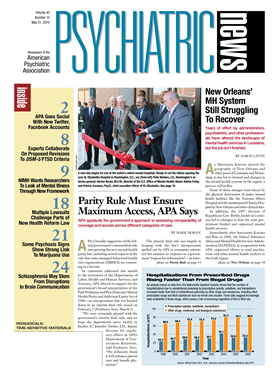More attempted and completed suicides occurred in patients who started on gabapentin, lamotrigine, oxcarbazapine, or tiagabine compared with those who started on topiramate, a retrospective epidemiological study has found.
Suspected to induce suicidal thoughts and behaviors, all antiepileptics are required by the Food and Drug Administration (FDA) to carry a standard warning about the risk, regardless of the diagnosis for which they are prescribed, since December 2008 (Psychiatric News, February 6, 2009). The FDA based its decision on a meta-analysis of controlled clinical trials involving 11 antiepileptic drugs used for a variety of indications, including bipolar disorder and pain. Because of the small number of suicidal events reported in clinical trials, the agency could not detect any drug-specific effects and imposed the warning on all drugs in the class.
The new study, published in the April 14 Journal of the American Medical Association, compared the rate of attempted suicides only, the combined rate of attempted or completed suicides (collectively termed “suicidal acts”), and the overall rate of suicidal acts or violent deaths, among patients who were prescribed various antiepileptics.
Using topiramate as the reference drug, the authors found that patients who took gabapentin, lamotrigine, oxcarbazepine, tiagabine, or valpropate showed statistically significantly higher rates of suicide attempts, suicidal acts, and suicidal acts or violent deaths.
When the authors used carbamazepine as the reference drug, gabapentin, lamotrigine, oxcarbazepine, and tiageabine were still associated with significantly higher risk for suicidal acts.
The analyses were based on pharmacy and medical claims extracted from a health insurance database of patients residing in 14 states. The authors, led by Elisabeth Patorno, M.D., M.P.H., are affiliated with Brigham and Women's Hospital at Harvard Medical School and with HealthCore Inc., a health care research firm owned by the health insurance company WellPoint, which provided the health care claims data. A HealthCore fellowship and the Harvard School of Public Health provided funding for the study.
The study included patients in the database who were aged 15 or older and took an antiepileptic between July 2001 and December 2006. Only those who had had no antiepileptic prescriptions in the six months before the antiepileptic prescription was filled—that is, new users—were included. Overall, 297,620 separate occurrences of antiepileptic use were identified.
Suicide attempts were retrospectively picked up through emergency department visits or hospital admissions associated with a diagnostic code for suicide attempts or self-inflicted injury. Deaths from suicide and violent deaths were cross-checked between the database and the National Death Index. These events were collected for a period of six months after the initial prescription or until the drug was discontinued, whichever came first. Twenty-six completed suicides, 801 attempted suicides, and 41 violent deaths were identified.
Because of the wide range of diagnoses linked to antiepileptic use, psychiatric comorbidities and other risk factors, such as age, sex, and antidepressant/lithium use, were controlled for in the statistical model. Nevertheless, the authors acknowledged that confounding effects from different diagnoses could have influenced the results. They cautioned that this study should be regarded as exploratory.
A previous retrospective study of bipolar patients showed only that the use of antiepileptics was associated with a lower rate of suicide attempts than was the case for bipolar patients who received no antiepileptics (Psychiatric News, March 5, 2010).
The current study did not compare the suicide rates of patients who did and who did not take antiepileptics. Thus, it cannot answer the question of whether some or all antiepileptics increase the risk of attempted or completed suicides above that for patients who do not take these medications.
